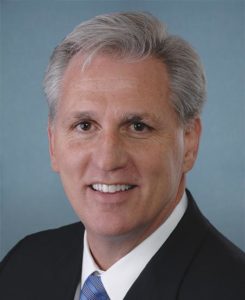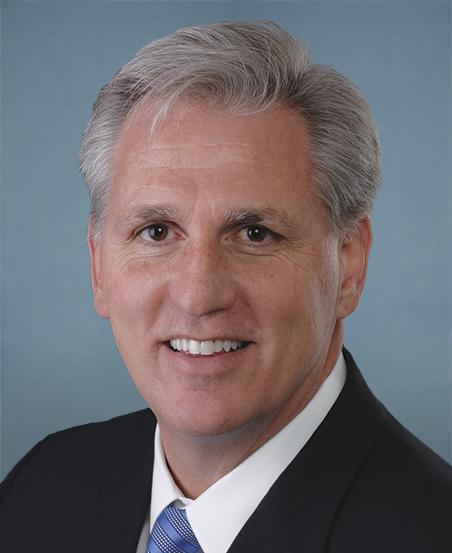
As negotiations over the debt limit continue to dominate headlines in Washington, the central focus of the back-and-forth between Democratic President Joe Biden and House Speaker Kevin McCarthy, R-Calif., is over the appropriations spending level for fiscal year 2024.
House Republicans passed the Limit, Save, Grow Act, which would reduce discretionary spending for fiscal year 2024, which begins on Oct. 1, to the level of fiscal year 2022. That might not seem like a big deal, but it would undo the wildly unaffordable increases in spending that Congress passed in last year’s atrocious omnibus package.
While appropriations bills only cover a portion of total federal spending—Social Security, Medicare, and welfare programs take up most of the budget—it would potentially have a big long-term effect if spending reductions this year also reduced spending in the future.
However, even if Biden and McCarthy do agree to a lower spending cap, there will still be a fierce debate within Congress over which programs to place on the chopping block—and how much they should carve off.
Before targeting core federal priorities, legislators have an obligation to cut wasteful and failed federal programs. Thankfully, a new report published by The Heritage Foundation highlights many savings targets for Congress, several of which involve getting rid of pork. (The Daily Signal is the news outlet of The Heritage Foundation.)
1) Earmarks and the Community Development Fund: The perfect example of Washington’s broken approach to spending is haphazardly doling out millions of dollars at a time for local boondoggle projects.
Earmarks, which were banned for more than a decade due to public ridiculeand corruption scandals, returned in 2021 with bipartisan support. While House Republicans have issued some worthwhile reforms, this year’s earmark requests from the House provide many examples of projects that have no business receiving consideration during a budget crunch, including:
- $13 million for a hydroelectric power facility in Old Harbor, Alaska. Old Harbor has a population of 216, meaning that this earmark would cost $60,185 for every resident.
- $5 million for the Copper Peak ski jump in Michigan.
- $3 million for a “feasibility study for recreational swimming in the Potomac River.”
- $36.4 million for the Max Westheimer Airport near the University of Oklahoma. This is by far the largest airport funding request, even though the airport isn’t even in the top 200 airports nationwide for passenger traffic.
- Tens of millions for electric bus and charging station purchases in California, Arizona, Virginia, New York, and more. Not only do electric buses provide negligible environmental benefits, their extra weightcauses heavy damage to local roads.
Those requests are merely the tip of the iceberg in the House, let alone the even larger mound of offal from the Senate.
In addition, the Community Development Fund is a pricey slush fund for these types of projects. Even if Congress were to reinstate the earmark ban, keeping programs like the Community Development Fund on the books would continue the practice of having Uncle Sam act as a sugar daddy for local governments.
Conservatives should see to it that both of these swampy cesspools are drained.
2) Department of Education: The federal agency that President Jimmy Carter established in 1979 has nothing to show for an inflation-adjusted $2.5 trillion in total spending over the past four-and-a-half decades. Test scores aren’t up, the affordability of higher education certainly hasn’t improved, and welcoming the Washington swamp into local schools has provided opportunities for Democrats to advance a leftist social and welfare agenda.
Rather than continuing to throw good money after bad, Congress should expel the Department of Education from the federal budget.
3) Rail and Transit: Washington directs billions of dollars every year toward transportation projects and systems that provide minimal value to the public.
The most wasteful of the programs are for intercity passenger rail and public transit systems. Combined, these modes of transportation account for less than 3% of travel by any measure, yet they receive a much greater share of federal dollars due to their conceptual importance to coastal liberals.
Decades of special subsidies for passenger rail, subways, and buses haven’t changed travel patterns, because no matter how much the Left wants Americans to move around like Europeans, America’s geography will always be very different than Europe’s.
4) Art for Elitists: The Kennedy Center, the National Endowment for the Arts, the National Endowment for the Humanities, and the Corporation for Public Broadcasting have all received annual handouts for decades. The rationale behind federal funding for those organizations grows weaker with each passing year.
Wealthy Americans voluntarily donate huge amounts to the arts, which makes the federal outlay unnecessary. Arts of all kinds are available to Americans in more varieties and quantities than could have been imagined 50 years ago, which makes the federal spending pointless. And the recipients of federal art grants skew overwhelmingly toward liberal tastes.
Congress can’t balance the budget by eliminating arts spending, but these programs represent the least-defensible federal outlays imaginable.
5) Employment and Training: While the concept of job training and employment assistance programs holds obvious appeal, we now have decades of experience to show that the federal government doesn’t do a good job of helping people find employment.
Not only are there 43 different job training and placement programs scattered across nine federal agencies, leading to high levels of overlap and neglect, but analysis of programs show that they are ineffective—to the point of costing hundreds of thousands of dollars per job they’re credited for.
Rather than address this track record of failure, legislators tend to ignore existing programs and create new ones. America can’t afford for legislators to keep making the same mistakes over and over again.
Taken together, eliminating or downsizing these five types of wasteful spending would make significant room for congressional appropriators to work with lower spending caps. Ideally, Congress would retain those savings in the future, resulting in hundreds of billions of dollars in savings per decade.
While we would still have a long way to go when it comes to addressing the federal government’s horrific budget problems, cutting wasteful appropriations would be an important first step.
By David Ditch, a policy analyst specializing in budget and transportation policy in the Grover M. Hermann Center for the Federal Budget at The Heritage Foundation. Reproduced with permission. Original here.
